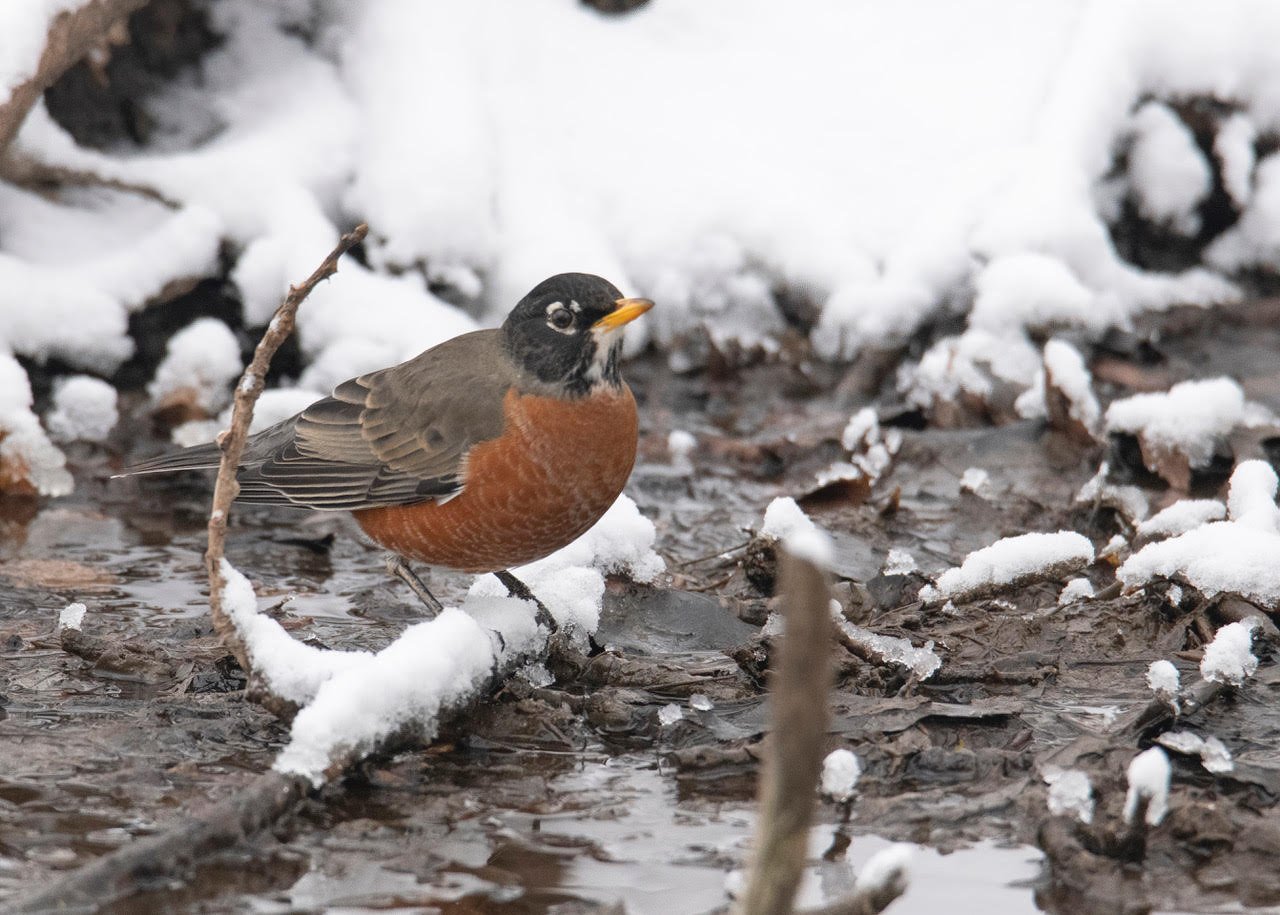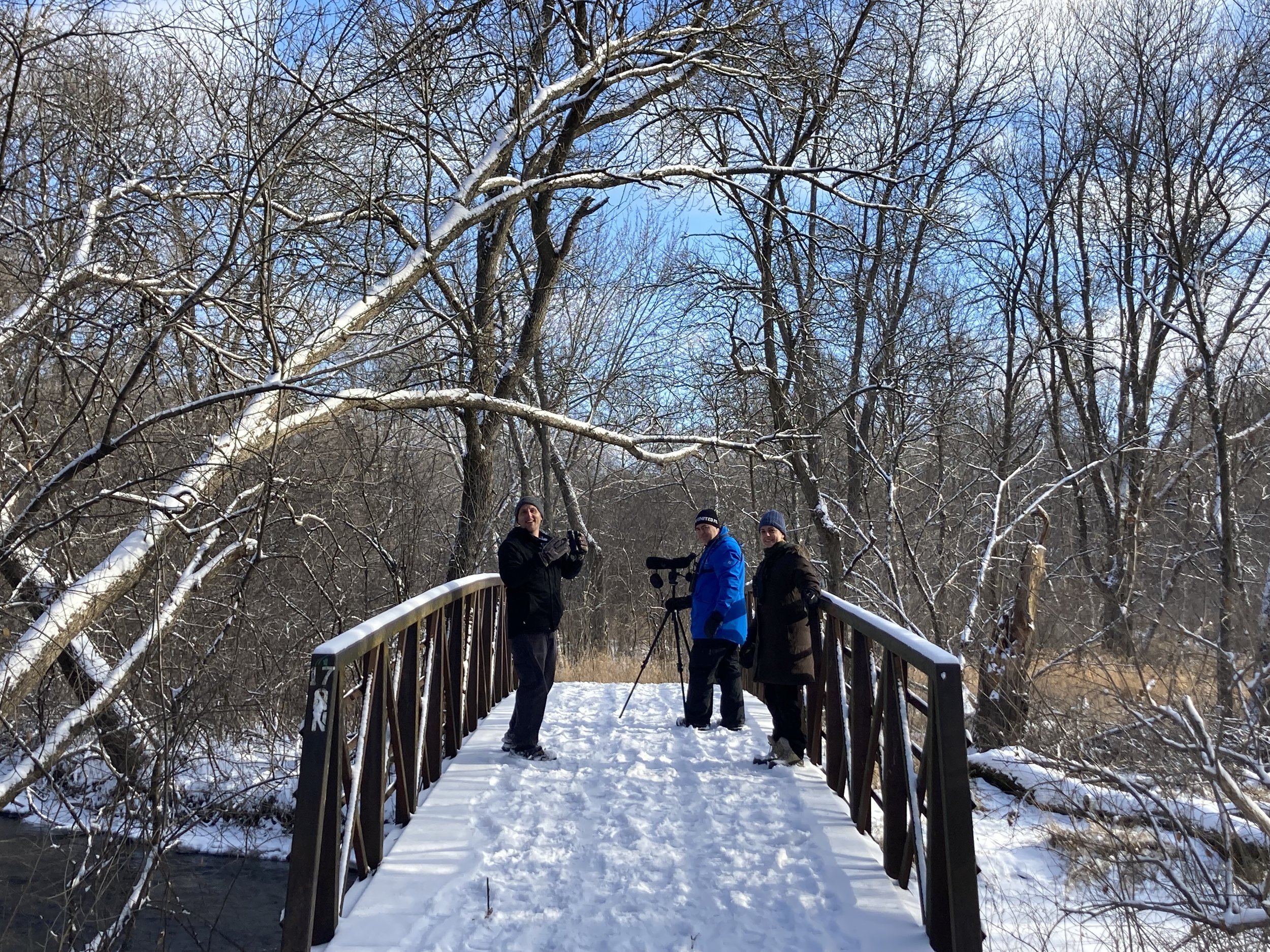The Christmas Bird Count is a Nerdy, Birdy Holiday Tradition
Citizen Scientists Participate in Annual Survey of Western Hemisphere Birds
American Robin. Photo: Keith Olstad
On the cloudy morning of December 18, 2021, forty volunteers split into groups of 3 or 4 at the Springbrook Nature Center in Fridley, MN and set out for the 122nd annual Audubon Christmas Bird Count, or CBC. Each counting party had a specific area in which to count birds in within a 15 mile wide count circle, centered around the Coon Rapids Dam, a bird hotspot on the Mississippi River that has been part of the annual census for over 60 years. Across the county, state, country, and continent, tens of thousands of volunteers likewise set out in their respective zones to participate in the longest-running citizen science survey in the world (1).
Volunteers in action at the 2021 Christmas Bird Count
Before the Christmas Bird Count collected bird population data for scientific research and conservation, the Christmas tradition of side hunts engaged Americans in competition for how many birds they could kill. On Christmas Day, 1900, ornithologist Frank Chapman initiated counting instead of killing every observed bird, kicking off the beginning of a centuries-long longitudinal survey of birds in the Western Hemisphere (2).
Christmas Bird Hunt: Woman Behind The Gun, by Gordon Ross, 1911. Image: Library of Congress.
“Shooting Red-Breasted Snipe on the Southern Coast” Image: Library of Congress
Since then, the CBC has provided more than a century's worth of data that scientists have used to better understand the decline and recovery of different species, helping conservationists and policy makers implement data-driven measures to help birds. For example, CBC data tracked the successful recovery of the Bald Eagle following the ban of DDT. Scientists can also use CBC data to monitor populations of nonnative species such as House Sparrows, as well as dramatic short-term changes, like the 2013 Snowy Owl irruption (3).
This year, Minneapolis volunteers drove 387 miles of roadways within the count circle, spent 46.25 hours walking 63.6 miles, braving 13-19 degree weather to count 6,791 individual birds. They counted 50 species of birds, including two bird species that have never been observed within the Coon Rapids Dam count circle, while another bird species reported had only been previously observed in the 1984 CBC count.
CBC survey coordinators will enter the data from the Minneapolis CBC into the Minnesota Ornithological Union (MOU) CBC database, as well as the National Audubon Society database. The National Audubon Society database is an open source tool available to anyone interested in viewing aggregated data from CBCs across North and South America. You can search by species, region, or view historical trends from different timeframes.
Winter wren Photo: Keith Olstad
Just how accurate is the CBC census data? While volunteers aren't able to count every individual, there are a number of measures in place to control data quality. For example, when a group reports an unusual or rare bird for an area, coordinators will request additional observation details, such as where it was observed, by how many people, specific field marks, and whether anyone was able to take a photograph. The Minnesota CBC state coordinator will review the information and determine whether or not the observation was valid and should be included in the count. In this year's survey, Minneapolis Audubon volunteers observed five bird species rare to the count circle this year requiring state-level review. count rules also address the problem of double counting by prohibiting counting birds when retracing one's route, except for species that the party hasn't seen before. Scientists have further addressed the issue of haphazard counting by developing statistical modeling methods facilitating analyses of heterogeneous citizen science data across large spatial scales.
All this science might sound highbrow, but the Christmas Bird Count is just plain fun. In addition to the thrill of doing science, volunteers get to spend a day outside looking for and counting birds with other bird- loving people. People who may be newer to birding are paired with experienced birders to ensure accurate counts and a positive experience for volunteers. In non-pandemic times, tradition calls for a potluck lunch or dinner during which volunteers from each group share observations and species highlights.
The CBC is a wonderful way to find new places to bird, new friends to bird with, and to learn more about birds while helping them. The past two years have been a bit different with the public health measures in place, but we hope that you will think about joining us for the count next year. It is free and open to anyone and everyone, and an excellent starting point for anyone looking to get into birding or connect with other birders. The Minneapolis Christmas Bird Count takes place each year on the third Sunday of December and we look forward to having you join us in our favorite holiday tradition in 2022.
Additional resources:
https://www.audubon.org/conservation/science/christmas-bird-count
https://www.audubon.org/conservation/history-christmas-bird-count
https://www.audubon.org/news/12-amazing-things-about-christmas-bird-count
Marian Weidner is an Audubon Chapter of Minneapolis board member





